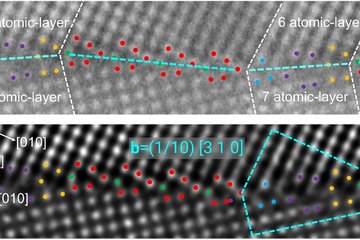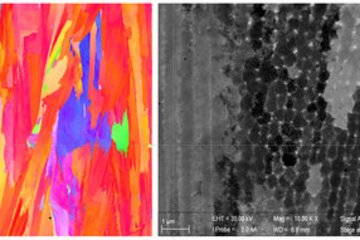All genres
41.
Talk
Intermediates of the Electrochemical Oxygen Reduction in Aqueous Media. ICAMS-Seminar, Interdisciplnary Centre for Advanced Materials Simulation, Ruhr-Universität Bochum, Germany (2010)
42.
Talk
Numerical Investigation of Electrode Surface Potential Mapping with Scanning Electrochemical Potential Microscopy. The 12th International Scanning Probe Microscopy Conference, Sapporo, Japan (2010)
43.
Talk
Numerical simulation of probing the electric double layer by scanning electrochemical Potential microscopy. 217th ECS Meeting, Vancouver, Canada (2010)
44.
Talk
Electrochemical Oxygen Reduction in Aqueous Solution, A DFT Study of the Intermediates. NACE Corrosion 2010, San Antonio, TX, USA (2010)
45.
Talk
Theoretical Investigation of the Electrochemical Oxygen Reduction Mechanism. Minisymposium "Perspectives in Quantum chemistry for Electrochemistry", Ruhr-Universität Bochum, Germany (2010)
46.
Talk
Numerical simulation of probing the electric double layer by scanning electrochemical potential microscopy. International Workshops on Surface Modification for Chemical and Biochemical Sensing, Przegorzaly, Poland (2009)
47.
Talk
Mechanism of the Electrochemical Oxygen Reduction. A DFT Study of the Intermediates. Electrochem09, Manchester, UK (2009)
48.
Talk
Electrochemical Oxygen Reduction Mechanism: A DFT Study of the Intermediates. 216th ESC Meeting, Wien, Austria (2009)
49.
Talk
Screening effects in probing the double layer by scanning electrochemical potential microscopy. Comsol European Conference October 2009, Milan, Italy (2009)
50.
Talk
Simulation of probing the electric double layer by scanning electrochemical potential microscopy (SECPM). 11th International Fischer Symposium on Microscopy in Electrochemistry, Benediktbeuern, Germany (2009)
51.
Talk
FEM Simulation of the Scanning Electrochemical Potential Microscopy (SECPM). Comsol European Conference 2008, Hannover, Germany (2008)
52.
Talk
Electrochemical oxygen reduction mechanism in aqueous solution. 3rd. Computational Materials Science Workshop, Ebernburg, Germany (2008)
53.
Talk
FEM Simulation of the Scanning Electrochemical Potential Microscopy (SECPM). SurMat Seminar, Schloß Gnadenthal, Kleve, Germany (2008)
54.
Talk
High density structures of ethyl-thiol SAM´s on Au(111): A DFT study. SurMat Seminar, Schloß Gnadenthal, Kleve, Germany (2008)
55.
Talk
The Role of Gold Adatoms in Self-Assembled Monolayers of Thiol on Au(111). 6th Congress of the International Society for Theoretical Chemical Physics, ISTCP-VI, University of British Columbia, Vancouver, Canada (2008)
56.
Talk
Ab-Initio Calculation of the Standard Hydrogen Electrode Potential and Application to the Mechanism of the Oxygen Reduction. Workshop on Converging Theoretical and Experimental Approaches to Corrosion, MPIE, Düsseldorf, Germany (2007)
57.
Talk
Modelling adhesion and delamination at oxide/polymer interfaces. Multiscale Material Modeling of Condensed Matter, MMM2007, St. Feliu de Guixols, Spain (2007)
58.
Talk
Oxygen Reduction at Thiol/Au(111)SAMs, Atomistic Modelling and Experiment. 212th ECS Meeting, Washington, D.C., USA (2007)
59.
Poster
Water in contact with H-terminated silicon: A combined ATR-IR spectroscopic and ab initio computational study. Bunsentagung 2015, 114th General Assembly of the German Bunsen Society for Physical Chemistry, Bochum, Germany (2015)
60.
Poster
Electrode potential dependent transformation of germanium/electrolyte interface in acidic medium: In-situ electrochemical ATR-IR and DFT. 112th Bunsentagung (Annual German Conference on Physical Chemistry), Karlsruhe Institute of Technology (KIT), Karlsruhe, Germany (2013)











